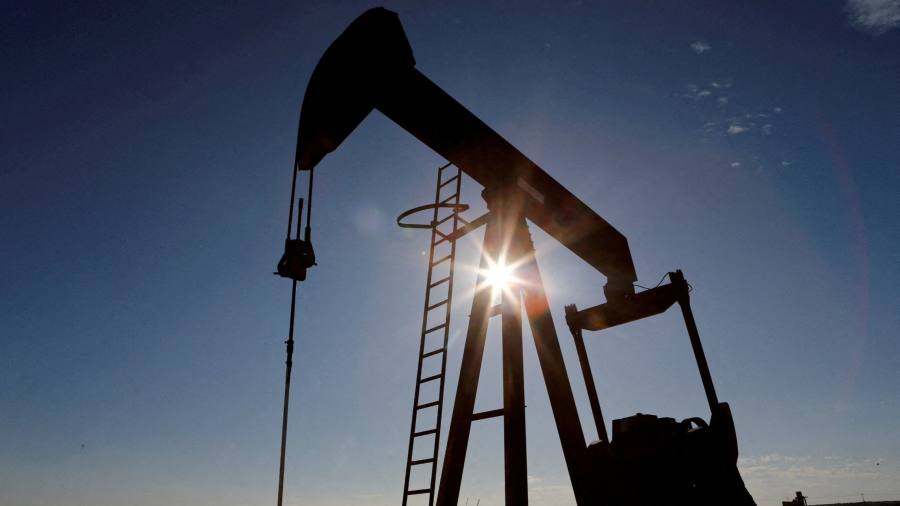Receive free Energy sector updates
We’ll send you a myFT Daily Digest email rounding up the latest Energy sector news every morning.
Good morning, and to our US readers a happy Fourth of July. As you enjoy the barbecues, family gatherings and fireworks, over in Europe there are some organisations that are not quite so enamoured with freedom.
Opec+ — which is in the news again, with Saudi Arabia and Russia announcing further production cuts on Monday — is gathering in Vienna, though not for a ministerial meeting, but its big jamboree known as the Opec International Seminar.
It’s in effect a conference where we would normally get to hear the oil cartel’s view of the world alongside some of the great-and-the-good of the energy industry, with companies such as BP, TotalEnergies and Occidental Petroleum all represented by their chief executives.
But the coverage might be a little sparse when it kicks off on July 5 as Opec has, once again, decided to ban large swaths of the media from attending one of their events. Freedom? That’s so July 4.
In our main read today we explore why the cartel’s struggles may go far beyond its media battle. Thanks for reading. — David
Opec is pushing oil uphill
Opec and its allies’ attempts to raise the oil price over the past 10 months are well-documented, as is the cartel’s growing frustration that, well, it’s not really worked.
When they first started announcing cuts in October, Brent was about $85 a barrel. Now it’s at about $75 a barrel. In August the Opec+ group will be holding back more than 5mn barrels a day from the market, with Saudi Arabia’s own output down to 9mn barrels a day — the lowest, aside from during Covid, in more than a decade.
For all their efforts it’s not really been a great return.
The hope for Opec+ is that prices may still rise in the coming months, with forecasts suggesting the oil market will be in a steep deficit for most of the second half of this year.
But the group’s recent struggles may reveal a difficult underlying truth. Few investors buy the cartel’s message that we’re simply no longer investing enough in oil production, and therefore the price needs to rise to avoid shortages.
The market believes, to put it simply, that there will be enough oil around for the foreseeable future.
The International Energy Agency’s medium-term outlook last month should have made for sobering reading (though Opec has started its own beef with the IEA too).
While the IEA has been at the forefront of warning about a tightening market later this year, its prognosis for the next few years is much more benign.
“The outlook improves over our 2022-28 forecast period,” the IEA said.
“Growth in world oil demand is set to slow markedly during the 2022-28 forecast period as the energy transition advances.”
The reason for the IEA’s rather relaxed air is countries like Guyana, Brazil and even the US are all adding output, while big Opec members such as Saudi Arabia and the UAE also want to increase capacity. At the same time, by the end of this decade oil demand will be barely growing or potentially already heading into reverse.
This is a very different backdrop to the $100 a barrel era of roughly (feel free to argue with me on the precise definition) 2005-14, when rapid demand growth in China and the rest of the developing world meant there were genuine fears the world could run short.
That anxiety helped keep the market bid up even when there was no threat of immediate shortages. The higher prices of that era, of course, eventually solved their own problem — by acting as a midwife for the US shale boom and other supplies.
This time? There might be periods of relative tightness — like last year, with Russia’s full-scale invasion of Ukraine — or even temporary panic. But a structural shortfall in supplies? It’s harder to see, and even harder to get investors to buy into it.
For Opec this is a problem. If oil traders and financial investors are generally relaxed about the supply outlook long-term it inevitably filters through to prices today.
Sure there are also short-term factors at play — pick from recession fears, a lacklustre Chinese rebound from Covid, or worries about inflation generally.
But underpinning oil’s rather flat 2023? An almost complete lack of fear about the long-term. That’s a big shift that should worry Opec+ even more. (David Sheppard)
Data Drill
Want to see what a complete lack of fear looks like? Hedge fund managers have reduced their bets on oil going higher to the lowest level in years. It is particularly noticeable in US benchmark West Texas Intermediate, where net longs — the difference between the number of bets on rising and falling prices — are just a third of the level of a year ago.
Power Points
Energy Source is written and edited by David Sheppard, Myles McCormick, Amanda Chu and Emily Goldberg. Reach us at [email protected] and follow us on Twitter at @FTEnergy. Catch up on past editions of the newsletter here.
Read the full article here



